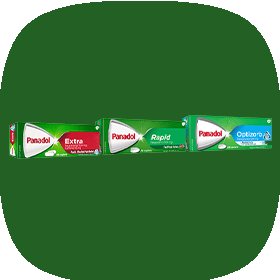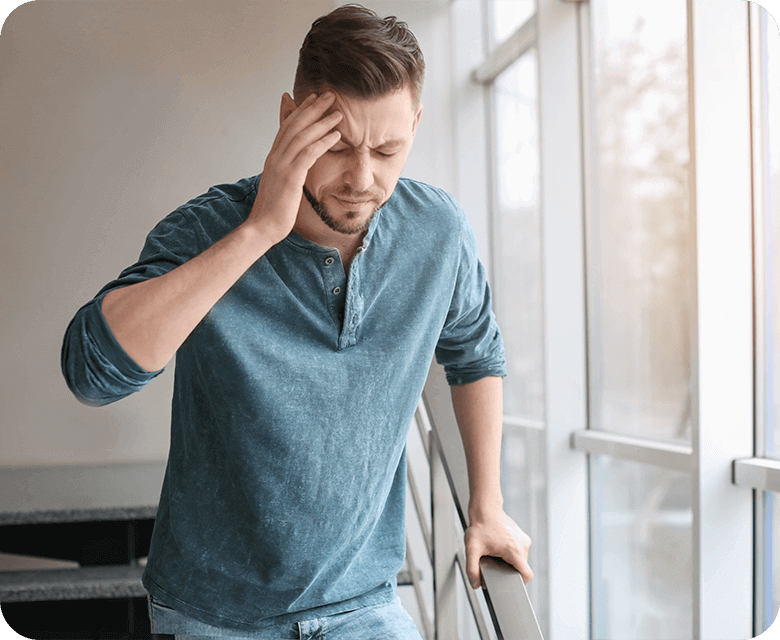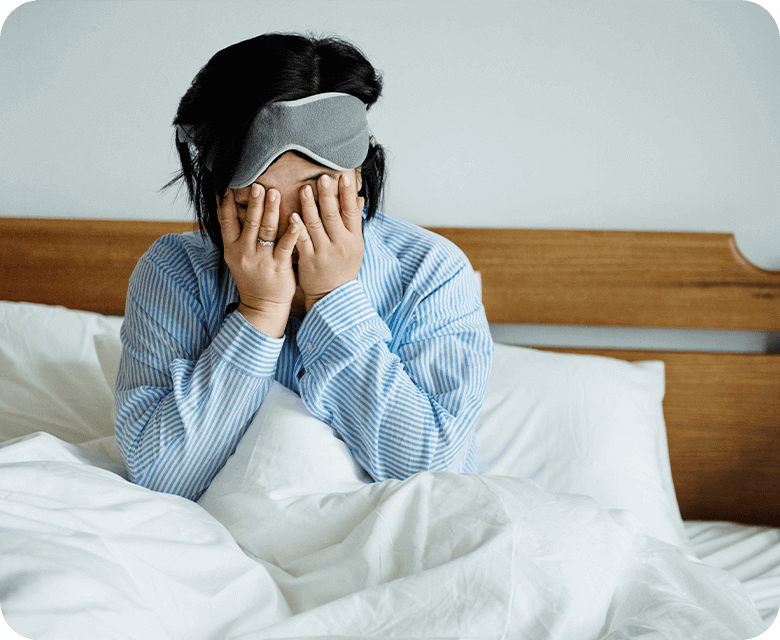Panadol Regular
Panadol Rapid
Panadol Extra
Panadol Osteo



It’s important to know the distinction between a regular headache and a migraine headache, as this will help determine which treatment option makes the most sense for you. Seek medical advice if unsure or if you suspect migraine headache.
What are migraine headaches and who gets them?
Migraine headaches are different from tension or cluster headaches. It is a complicated condition that presents with a variety of symptoms. Migraines affect around 12% of the world population and are the third most common illness globally. Women are more likely to suffer migraines than men.
Migraines can cause severe pain that, if not promptly addressed, can last for many hours and sometimes even days.

What are the top three symptoms of migraine?
Migraines can have different phases and certain symptoms are associated with each phase.
A migraine headache can have certain common symptoms:
1. One-sided throbbing or pulsing pain
2. Sensitivity to light or noise
3. Nausea or vomiting
A migraine is associated with a more intense pain than a tension headache. The pain is often throbbing and movement can make it worse.
Everyone is different, but here are some of the symptoms you may experience:
- Blurred vision or visual disturbances such as flashing lights as part of the experience of an aura
- Sensitivity to light, sound, or certain smells
- Feeling nauseated
What are common migraine symptoms?
Migraines can cause a debilitating headache, associated with dizziness, and nausea. An aura, or disruption of the vision can be a warning sign that a migraine is about to start.

Early Stage
Many acute and chronic migraine sufferers notice certain symptoms occur one or two days before they get a migraine headache. This is known as the prodrome stage. During this stage, you may experience fatigue, neck stiffness, food cravings or mood changes and irritability.
Around 20% of migraine patients get an aura. People often describe auras as light flashes or bright spots that appear before the eyes. They usually go away within 30 minutes to an hour.
There are other typical symptoms of auras:
- Seeing light shapes or flashes
- Changes in smell
- Tingling sensation in face or arms or legs
An aura is usually a signal that a migraine attack is about to start. The headache can be throbbing, pulsating, or feel like pounding.
Migraine pain is moderate to severe and people often require pain relief and bed rest.
Resolution
The resolution is the last stage of a migraine. During this phase patients may experience symptoms similar to the early Stage.

How long do migraines last?
Migraine symptoms can last from a few hours to a few days, and attacks can be reoccurring.
Fortunately, there are numerous management options that can help you substantially reduce the severity and recurrence of migraines.
What causes migraines?
Researchers aren’t entirely sure of the underlying cause of migraines. While the exact reasons for migraines aren’t well understood, the condition tends to run in families.
Hormones and certain brain biochemicals are some of the factors that researchers are exploring in their search to discover what causes migraines.
Migraine triggers
Migraines can be triggered by numerous factors in an individual’s lifestyle and direct environment. Below are some of the most common triggers that have been identified to contribute to the onset of a migraine. To help identify what's contributing to your migraines, try avoiding these things:
- Alcohol (particularly red wine or beer)
- Chocolate and/or citrus fruits
- Stress and/or over excitement
- Fatigue brought on by lack of sleep
- Exposure to bright or flickering light, strong smells, or loud noises
What are some migraine headache relief options?
There are many different options available for a migraine headache. But learning about your triggers can help you avoid attacks in the future.
When you’re relieving a migraine headache, you may have many questions. What are the best options? Is pain medication effective for migraine headaches? Can I relieve migraine headaches naturally?
There are three categories of migraine treatment:
- acute or immediate treatment which aims to provide pain relief for a current migraine
- preventative treatment, which considers long term goals of reducing the frequency and severity of migraines
- lifestyle changes, which includes avoiding triggers and finding activities to maintain general health
Pain medication
Many people may wish to try a pain reliever like paracetamol as soon as they can feel a migraine headache coming on.
There are many options to relieve the symptoms of a migraine, however, if you’re experiencing persistent or recurrent migraine headaches then it’s best to consult your healthcare professional.







